Incorrectly selected material can ruin the most beautiful and thoughtful interior, and make work in the kitchen uncomfortable. When choosing the appearance of the future kitchen, you should pay close attention to the material from which the facades of the kitchen set are made, and choose exactly the one that suits you most fully.
Characteristics of basic materials for kitchen facades
In order not to be mistaken with the choice, it is necessary to have a good idea of what materials the facades are mainly made of, what are their pros and cons. First, you need to understand the technology for the production of kitchen facades from composite materials - the most commonly found on the market.
The base of the facade, as a rule, is made of chipboard (particle board) or MDF (fiber board). Then a coating is applied to this base, which performs protective and decorative functions. Sometimes the base is made of plywood or even wood, but such kitchen fronts are much more expensive. The role of the decorative coating is usually played by plastic, but it is also possible to use wood veneer and other materials.
The choice of material for the kitchen is due to rather harsh operating conditions: high temperatures, high humidity, the content of soot and grease particles in the air, the possibility of ingress of aggressive liquids - all this imposes certain requirements if you want the headset to serve you for a long time.
Today, MDF boards are most in demand as a material for the base of kitchen facades, since MDF has a dense structure, similar to the structure of wood, allowing you to mold any patterns. The properties of kitchen facades, in the case of using composite materials for their production, depend on the characteristics of the coating, and when made from wood - on the properties of the wood species.
Thinking over which facades to choose for the kitchen, it is necessary to pay attention not only to their decorative qualities and price, but also to the characteristics of the materials from which they are made. The more resistant these materials are to aggressive environments, high temperatures and high humidity, the longer the kitchen set will last without changing its appearance.
Overview of the main materials for the kitchen set
Laminated facades
The procedure for covering MDF (or chipboard) panels with melamine film is called lamination. Such a film is paper that is impregnated with resins and varnished. This is the most economical option, which does not look very attractive and does not last long. Sometimes, cabinets for kitchen furniture are also made from such panels.
Pros:
- Low price;
- Availability of various forms of facades while maintaining a low price for them.
Minuses:
- Unattractive headset;
- Low resistance to aggressive substances;
- Rapid loss of appearance;
- Possibility of manufacturing only straight facades.
MDF kitchen fronts with enamel coating
These facades are made from medium density fibreboard, which allows you to shape them into any shape. From above they are painted according to the technology adopted in the automotive industry: first, the surface of the panel is primed, then covered with paint in several layers, after which a varnish is applied. Each layer applied is sanded and the resulting coating is highly resistant and attractive.
Pros:
- It is possible to use various colors and color combinations;
- The texture of the kitchen facade can be varied: matte, glossy, mother-of-pearl, pearl, "metallic";
- Facades do not require complex maintenance, it is enough to wash them with water and a mild detergent;
- The material is resistant to external influences, retains its original appearance for a long time;
- Facades of any shape can be made - round, wavy.
Minuses:
- Quite a high cost of manufacturing, as a result - a high final cost of the headset;
- The glossy surface is sensitive to grease and even fingerprints;
- The paint can fade in the sun and under the influence of ultraviolet radiation;
- Poorly tolerate mechanical stress, chips may appear.
PVC coated MDF kitchen facades
In the manufacture of these kitchen facades, all the advantages of the MDF base are used, while instead of expensive painting, a polymer film is used as a covering layer, which is much simpler and cheaper. The film can have a matte or glossy surface. The drawing applied to the film can be done in any way, for example, imitate wood, stone, marble, ceramic tiles, granite surface. The color of the film can also be of any color.
Pros:
- A large number of options for drawings and colors of facades;
- Budget cost;
- High resistance to aggressive media and abrasion;
- The same cost for both standard and non-standard kitchen items.
Minuses:
- When imitating the texture of natural materials, it is impossible to achieve an acceptable visual effect, the result obtained is very different from the original;
- The film coating does not tolerate elevated temperatures well, peeling from the base is possible;
- The pattern applied to the film is susceptible to fading in the sun.
Materials for plastic kitchen facades
As a coating for MDF panels, HPL is also used - paper-laminated plastic. This unique material is made using a special technology. The paper is impregnated with specially designed resinous compounds, folded in layers and pressed at high temperature and high pressure. The result is a very high quality and beautiful material for a kitchen set.
This material is glued to the MDF or chipboard base board. In this case, the processing of the ends, as a rule, is carried out by the postforming method: two sides of the plastic are folded onto the ends, and the remaining two are pasted over with a special edge. There are also alternative methods of edging, for example, all ends can be closed with an acrylic edging, aluminum edging, ABS or PVC edging. The edge may not differ from the color of the facade, or it may be contrasting.
Pros:
- Good resistance to mechanical stress, high humidity, aggressive substances;
- Facades are not subject to fading under the influence of sunlight;
- Long service life of the headset without losing its appearance;
- It is possible to manufacture facades of any complex shapes.
Minuses:
- The glossy surface gets dirty easily, fingerprints may remain on it;
- The interior of the facades is white;
- Matte surface is difficult to clean, dirt is difficult to remove from it;
- The appearance of geometric defects is possible.
Frame facades based on MDF profile
The most popular are combined facades - other material is inserted into frames made of MDF, for example, rattan mats, glass, plastic.At the same time, the frame itself is covered with PVC film or covered with veneer (a more expensive option).
Pros:
- Less weight in comparison with standard kitchen fronts, respectively - longer service life of mechanical furniture units;
- A variety of materials for inserts allows designers to create original, expressive kitchen designs that fit different styles of interior decoration;
- Non-standard sizes do not increase the cost of the furniture;
- Low price.
Minuses:
- Low resistance to wear, high humidity;
- The coating may peel off during operation;
- Quite difficult in daily care;
- The fastening of the frames may be weak.
Kitchen fronts with aluminum frames
Modern styles of interior design dictate the choice of new, modern materials, which should be taken into account when deciding which facades to choose for the kitchen. In particular, facades consisting of frames assembled from an aluminum profile are perfect for high-tech style. Rattan, MDF, plastic or glass panels are inserted into these frames. It looks original, and in the case of using glass inserts, it also "lightens" the furniture set, giving it airiness.
Pros:
- The metal base increases the strength and durability of the facades;
- The combination of various materials opens up wide decorative possibilities;
- The price for standard and non-standard facades does not differ;
- Increased resistance to moisture and mechanical stress.
Minuses:
- The need to use special fastening systems;
- Low resistance to abrasive and chemically aggressive substances;
- The metal fades over time and loses its appearance;
- Quite a high price.
Wooden kitchen fronts
When choosing a material for a kitchen, it must be borne in mind that natural materials look solid and elegant, but they are also expensive. Wood, as the most traditional material for the manufacture of any furniture, including kitchen furniture, will certainly bring warmth to the interior and create homeliness, but such a kitchen is appropriate for a large area.
Wooden kitchen facades are of two types: completely made of wood, and paneled - a panel from another material is inserted into a wooden frame, for example, MDF, chipboard, glass. Facades with a panel are a more budget option, and if the panel is veneered, then by eye it is impossible to distinguish it from a completely wooden structure.
Pros:
- Solidity, elegance, high aesthetic qualities;
- Environmental friendliness;
- Durability;
- Long-term relevance in terms of interior fashion;
- The ability to decorate in various ways - carving, inserts, cornices.
Minuses
- High price;
- Complicated care;
- Poor UV resistance;
- Deteriorating over time resistance to high humidity;
- The ability to absorb kitchen odors;
- Small variety of offered models.

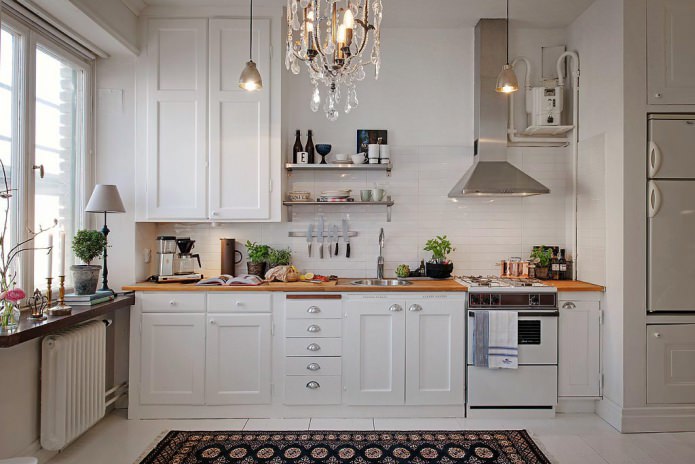
 10 practical tips for arranging a small kitchen in the country
10 practical tips for arranging a small kitchen in the country
 12 simple ideas for a small garden that will make it visually spacious
12 simple ideas for a small garden that will make it visually spacious
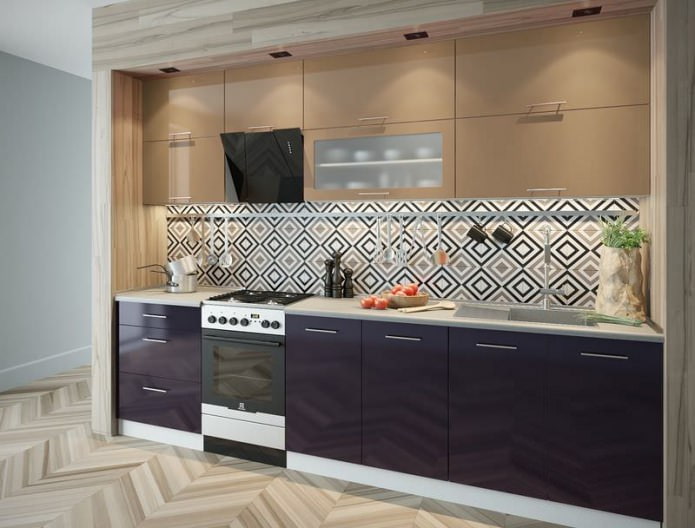
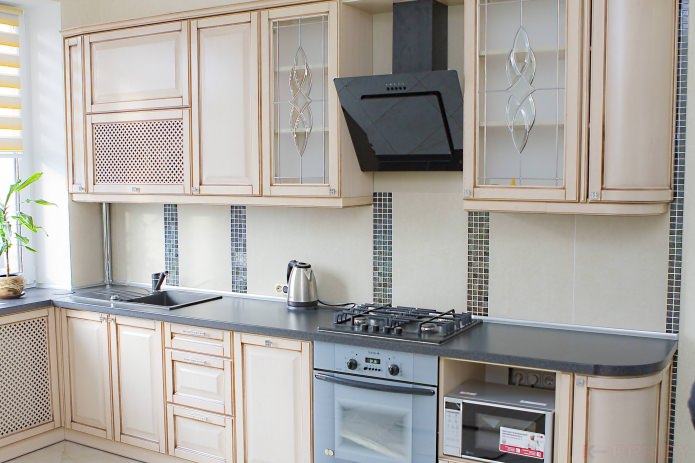
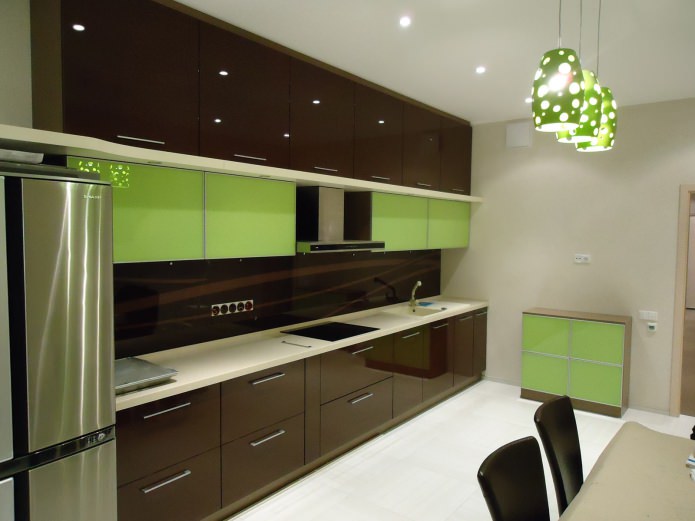
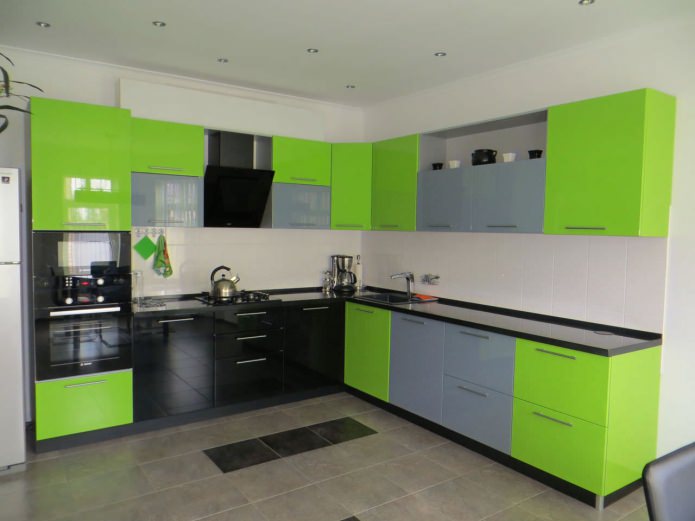
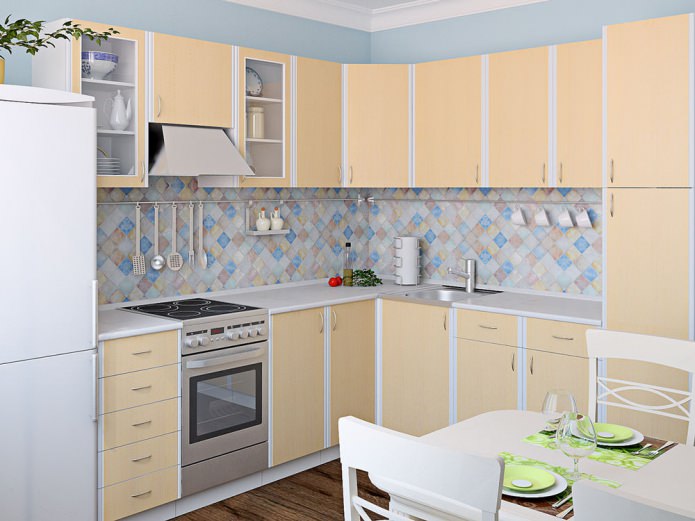

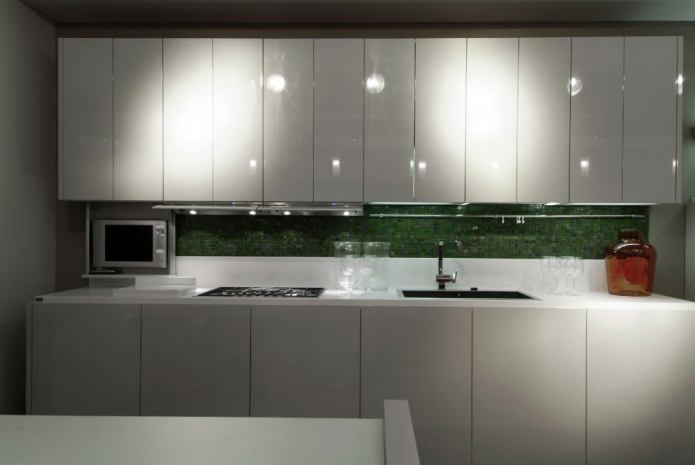
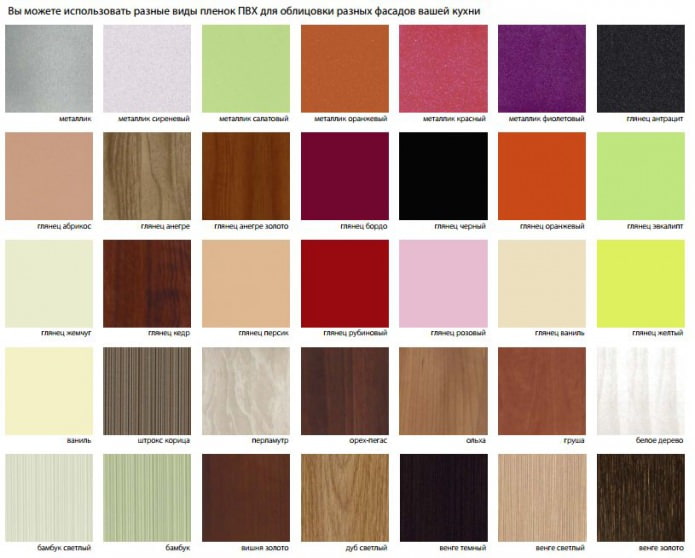
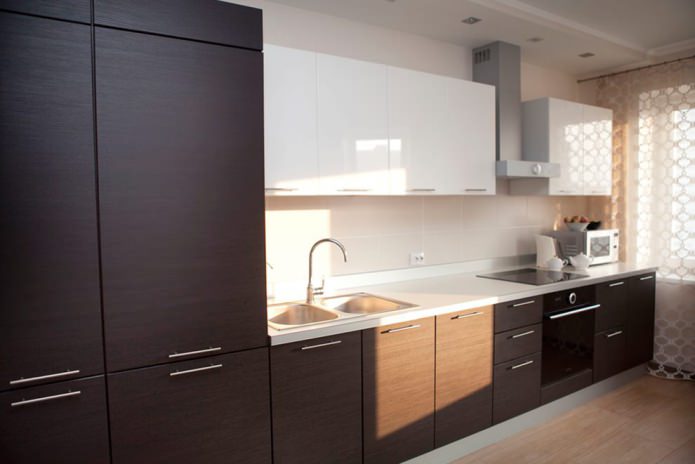
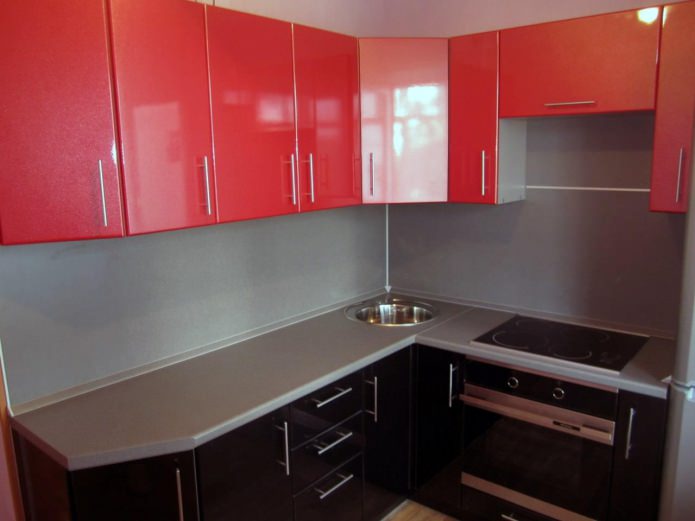
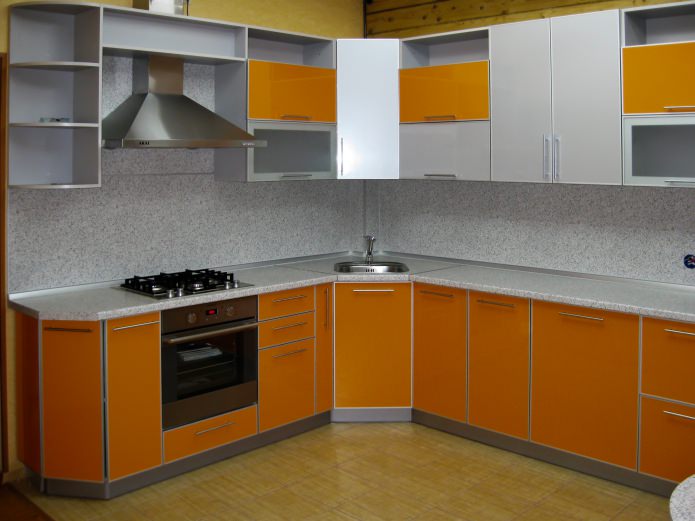
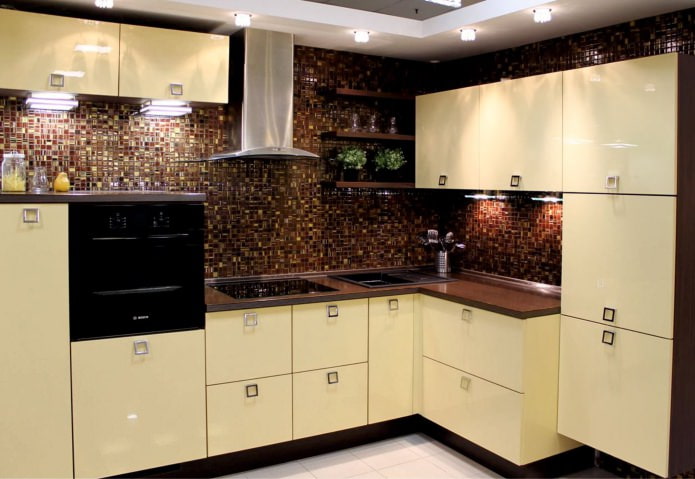
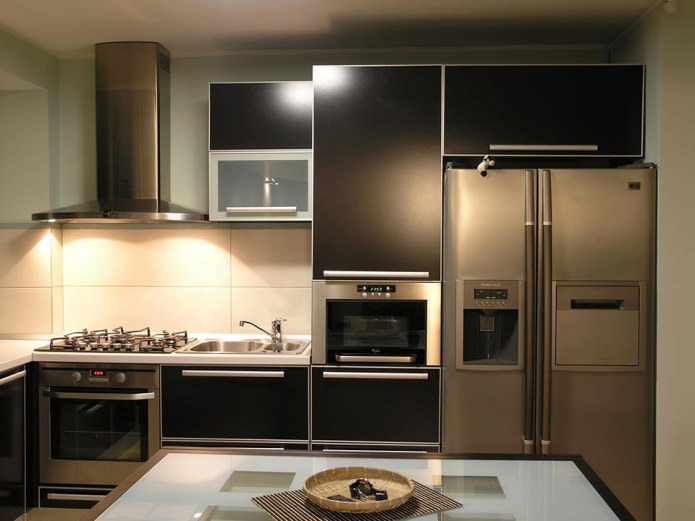
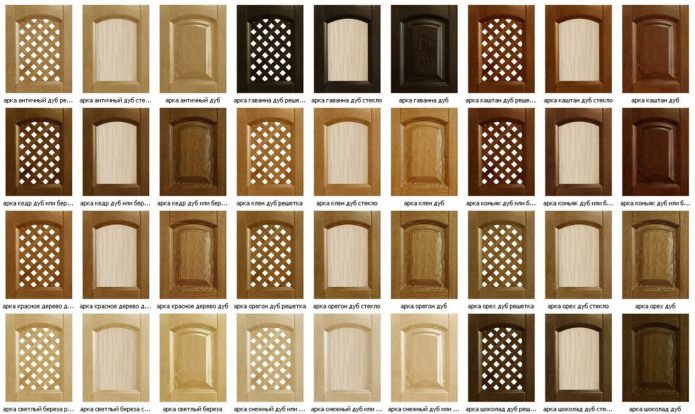
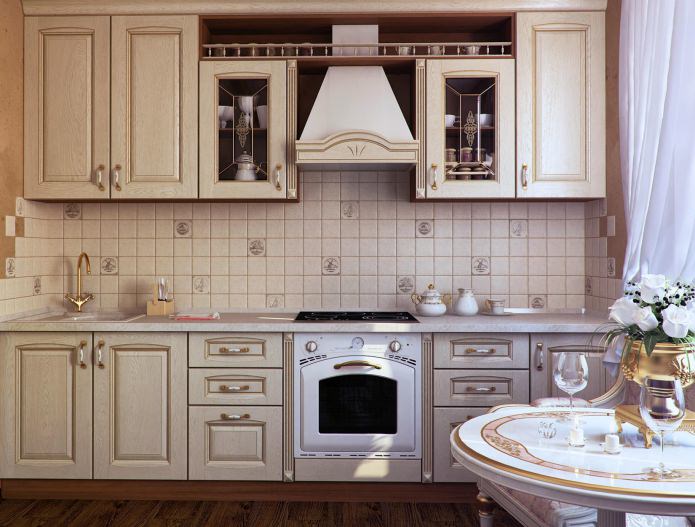
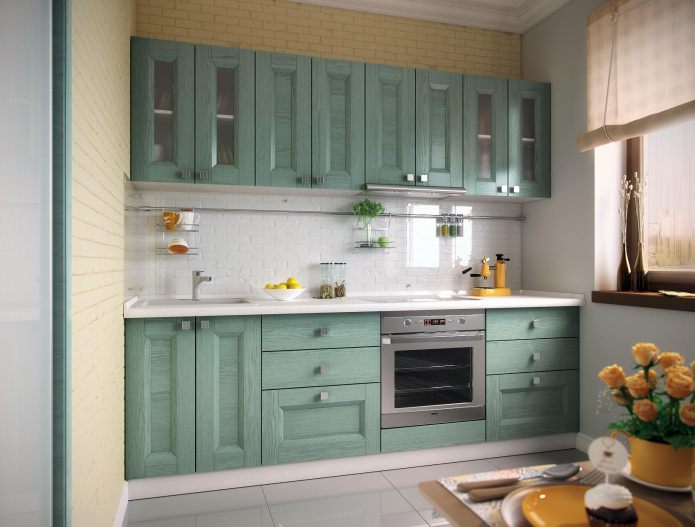
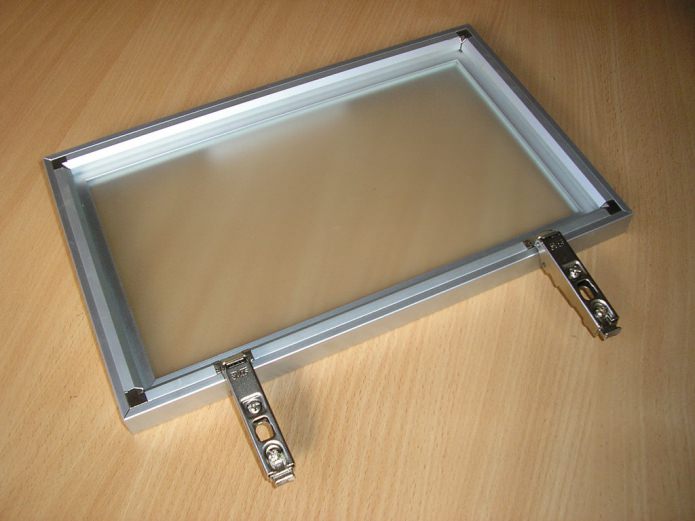
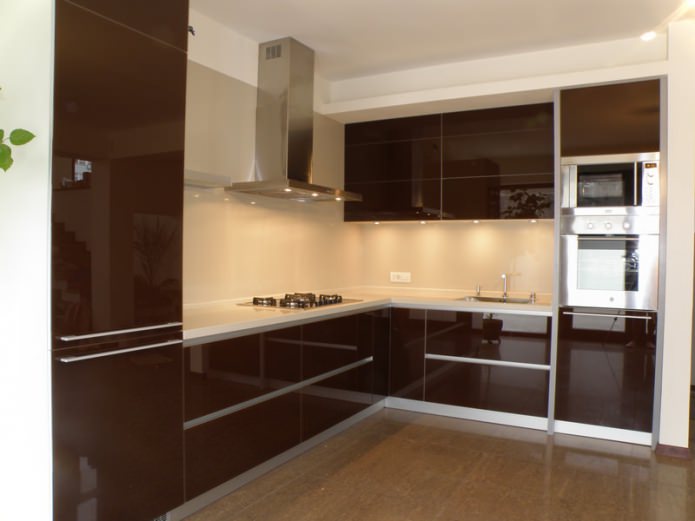

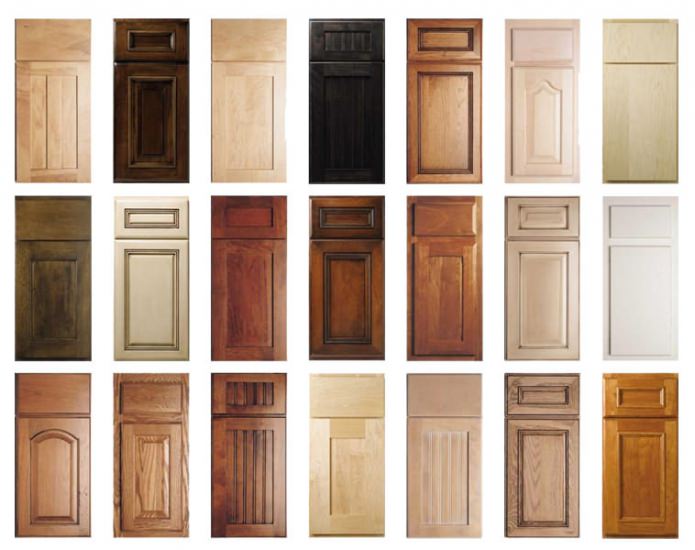
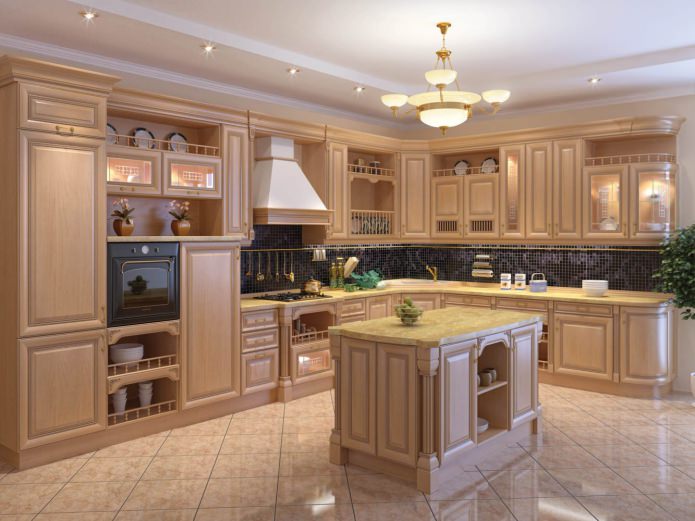
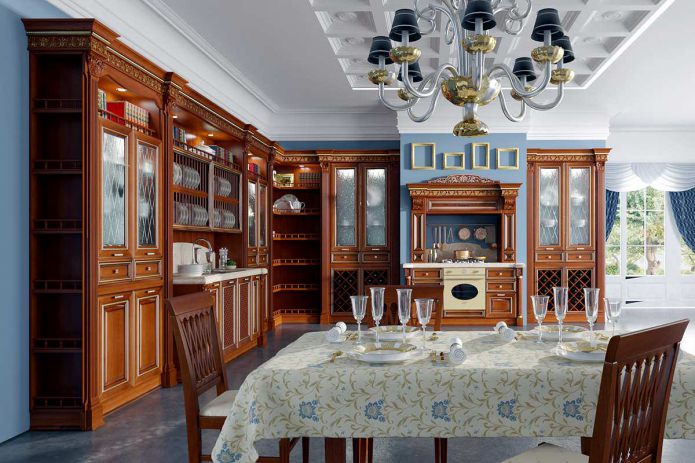
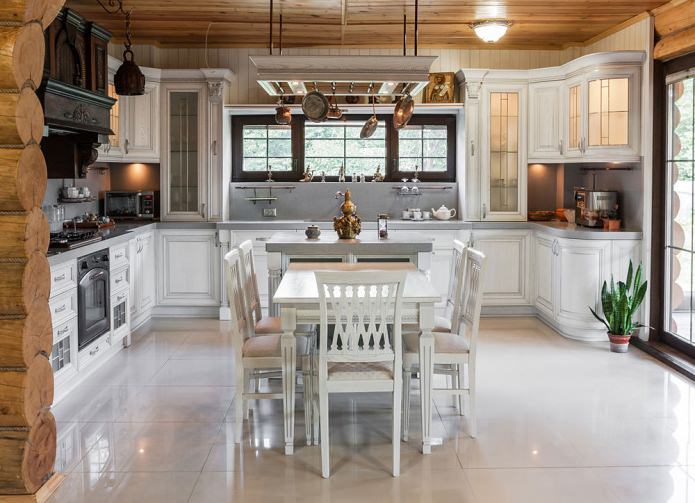
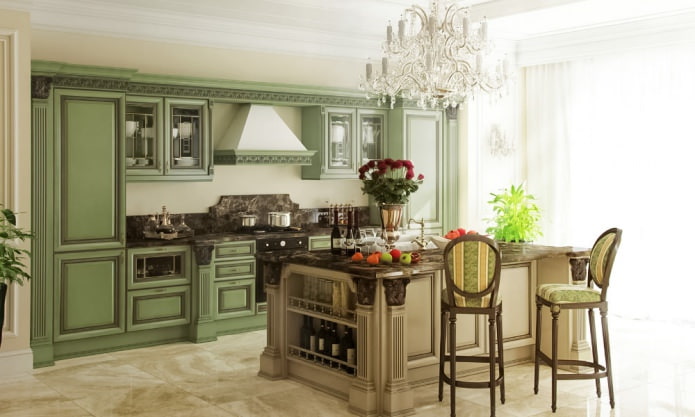

 How to choose the color of your kitchen sink?
How to choose the color of your kitchen sink? White kitchen set: features of choice, combination, 70 photos in the interior
White kitchen set: features of choice, combination, 70 photos in the interior Black set in the interior in the kitchen: design, choice of wallpaper, 90 photos
Black set in the interior in the kitchen: design, choice of wallpaper, 90 photos How to choose curtains for the kitchen and not regret it? - we understand all the nuances
How to choose curtains for the kitchen and not regret it? - we understand all the nuances Design of a white kitchen with a black countertop: 80 best ideas, photos in the interior
Design of a white kitchen with a black countertop: 80 best ideas, photos in the interior Kitchen design with green wallpaper: 55 modern photos in the interior
Kitchen design with green wallpaper: 55 modern photos in the interior